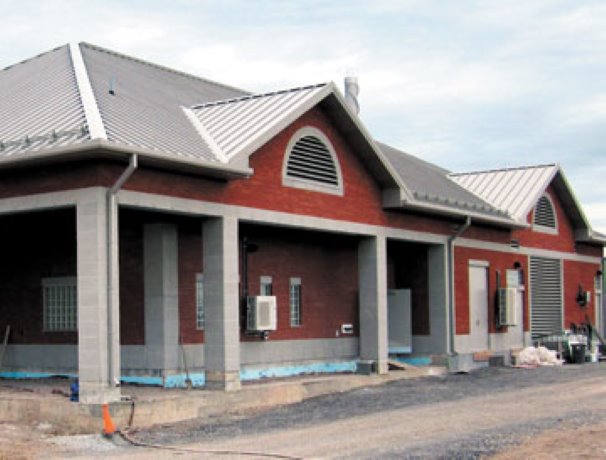T.R. Hinan Contractors Inc., and Maple Reinders have built water booster stations for the Regional Municipality of Halton in the towns of Milton and Oakville, west of Toronto. With pitched roofs and stylish bricks, they were designed to blend in with the neighbourhoods.
Except that the buildings — one in Oakville and the other in Milton — aren’t houses. Rather, they are regional water booster pumping stations built to support expected growth in the two municipalities, especially along the south side of the Highway 401 corridor.
■ Daily Commercial News subscribers may view more information on T.R. Hinan Contractors Inc. and its projects by viewing company ID 50383 in Reed Construction Data Canada Building Reports. More information on Maple Reinders can be found by viewing company ID 248110.
If you are not already a subscriber, you can be by filling out the form at this web page.
Building Reports are published daily in the Daily Commercial News. The Daily Top 10 Construction projects can be viewed online free of charge at the Reed Construction Data Canada Building Reports web page.
To learn more about construction project leads from Reed Construction Data, fill out the web form at this web page.
Located near the Sixteen Mile Sports Complex, the $6-million, 750-square-metre, 100-ML/d Oakville station is on the west side of Neyagawa Blvd. just north of Dundas Street West. The general contractor is Maple Reinders Constructors.
Constructed at a cost of approximately $5 million by T.R. Hinan Contractors Inc., the 500-square-metre, 30 ML/d Milton facility is on the west side of Fourth Line just north of Louis St. Laurent Avenue — a relatively new road still under construction — and south of Derry Road. It will probably be commissioned later this year.
Although two separate projects, both were designed and built so they would blend in with existing and planned future area neighbourhoods, says Zoran Filinov, principal and manager of the water supply group at R.V. Anderson Associates Ltd., the region’s consultant.
More stories in this feature:
Contractors for Canadian Space Agency to study remediation of low earth orbit
Remediation project at closed Toronto military base includes storm management pond
Tearing down an iconic Sudbury, Ontario tower
Why busted marijuana grow-ops pose a challenge for remediation and demolition
“People don’t like to live near industrial buildings.”
When planning and design started just a few years ago, the surrounding area was basically farm fields. “But these developments seem to literally pop up and soon they (pump houses) will be in the middle of the subdivisions.”
In recent years, there has been a concentrated effort by municipalities and consultants to minimize the industrial appearance of utility buildings in residential and commercial neighbourhoods, Filinov says.
“Certainly that was Halton Region’s goal from the start. But the design went through an evolutionary process with the input of the lower-tier municipalities who have final control on issues such as zoning, variances and landscaping.”
In the end, the more elaborate look probably added about 10 to 15 per cent to the cost. For the contractors, though, “the projects were like any other jobs.”
And despite their exterior architectural façade, there is no mistaking their real function from the interior. The fully automated, self-sufficient stations can operate at full capacity during power failures and are equipped with a number of safety devices including pressure relief valves to allow the pumps to run at low flow, plus various automatic and visual / manual monitoring features and sophisticated alarms.
The Oakville station also includes equipment for providing emergency water supply, so that water can bypass the pumps if they fail. “This means that the subdivisions won’t likely ever experience a water shortage.”



Recent Comments
comments for this post are closed